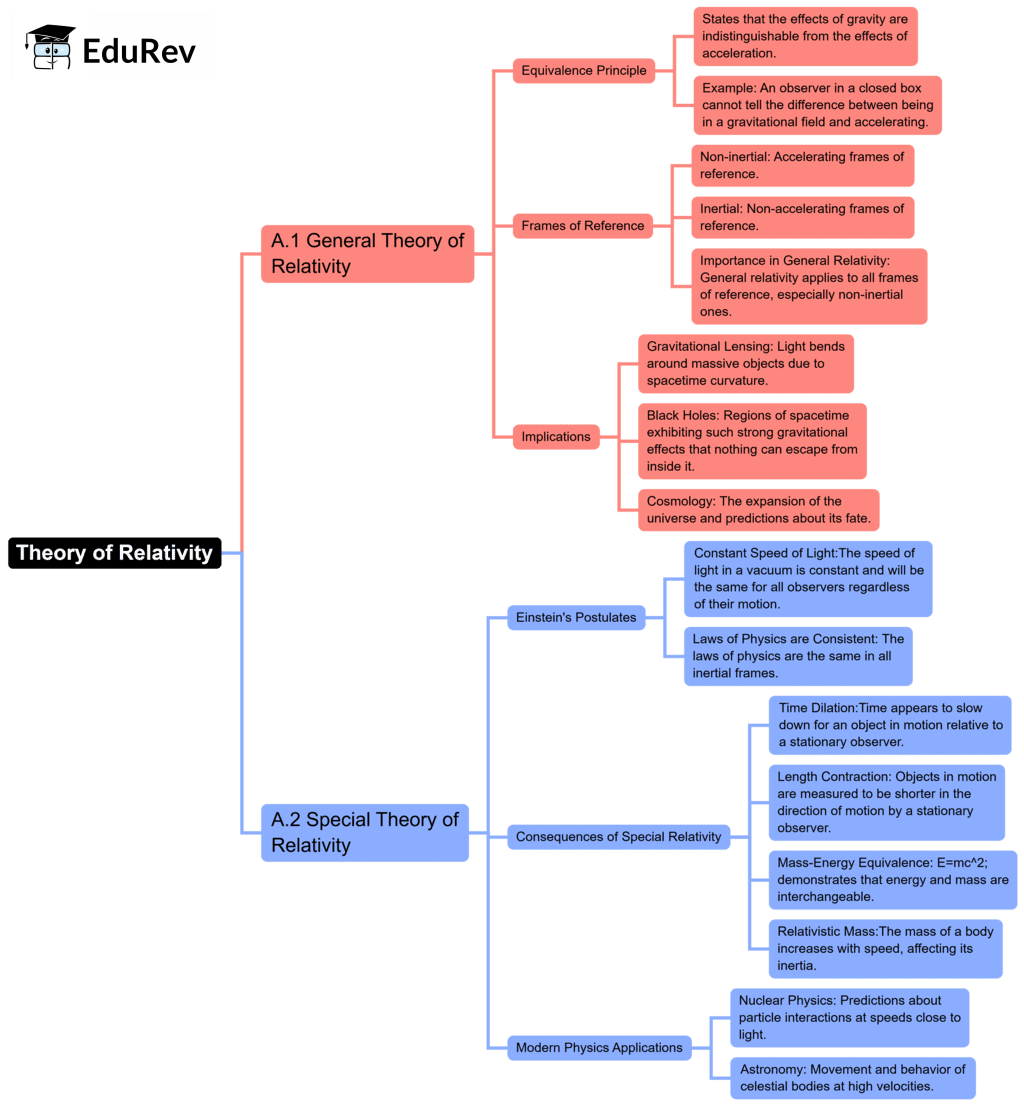EmSAT Achieve Exam > EmSAT Achieve Notes > Physics for EmSAT Achieve > Mind Map: Theory of Relativity
Mind Map: Theory of Relativity | Physics for EmSAT Achieve PDF Download

The document Mind Map: Theory of Relativity | Physics for EmSAT Achieve is a part of the EmSAT Achieve Course Physics for EmSAT Achieve.
All you need of EmSAT Achieve at this link: EmSAT Achieve
|
218 videos|407 docs|221 tests
|
FAQs on Mind Map: Theory of Relativity - Physics for EmSAT Achieve
| 1. What is the Theory of Relativity and who proposed it? |  |
Ans. The Theory of Relativity is a scientific theory that revolutionized our understanding of space, time, and gravity. It consists of two parts: Special Relativity and General Relativity. Special Relativity, proposed in 1905, addresses the physics of objects moving at constant speeds, particularly at speeds close to the speed of light, and introduces the famous equation E=mc². General Relativity, introduced in 1915, expands on this by describing how gravity affects the fabric of space-time. Both theories were proposed by Albert Einstein.
| 2. How does Special Relativity differ from General Relativity? |  |
Ans. Special Relativity focuses on the physics of objects in uniform motion and establishes that the laws of physics are the same for all observers, regardless of their relative motion. It introduces concepts such as time dilation and length contraction. General Relativity, on the other hand, deals with accelerated motion and gravitational fields, describing gravity not as a force but as a curvature of space-time caused by mass. This means that massive objects can warp the space around them, affecting the motion of other objects.
| 3. What are some key implications of the Theory of Relativity? |  |
Ans. The Theory of Relativity has several profound implications, including the understanding that time is relative and can pass at different rates depending on an object's speed and gravitational field. It also leads to the prediction of phenomena such as black holes, gravitational waves, and the bending of light around massive objects. These implications have reshaped our understanding of the universe, influencing fields such as astrophysics and cosmology.
| 4. How did the Theory of Relativity change classical physics? |  |
Ans. The Theory of Relativity challenged and expanded upon the principles of classical physics, which were primarily based on Newtonian mechanics. Classical physics assumed absolute time and space, while relativity introduced the idea that measurements of time and space are relative to the observer's state of motion. This shift necessitated a reevaluation of concepts such as simultaneity, motion, and gravity, leading to a more comprehensive understanding of the physical universe.
| 5. What experiments or observations support the Theory of Relativity? |  |
Ans. Numerous experiments and observations support the Theory of Relativity. One significant test was the observation of the bending of light from stars during a solar eclipse, confirming predictions made by General Relativity. Other evidence includes the detection of gravitational waves, the precise measurements of time dilation in particles moving at high speeds, and the behavior of GPS satellites, which must account for relativistic effects to provide accurate positioning data. These validations reinforce the theory's accuracy and applicability in modern physics.
Related Searches













